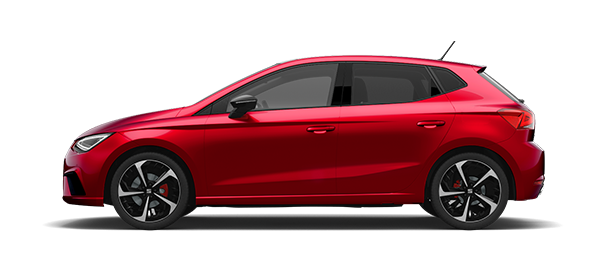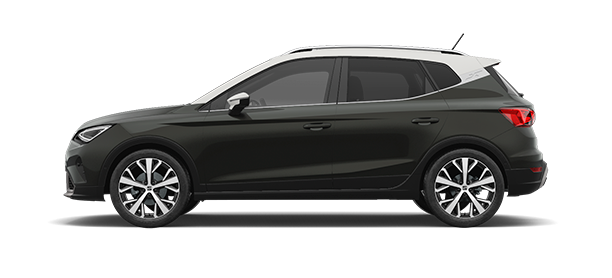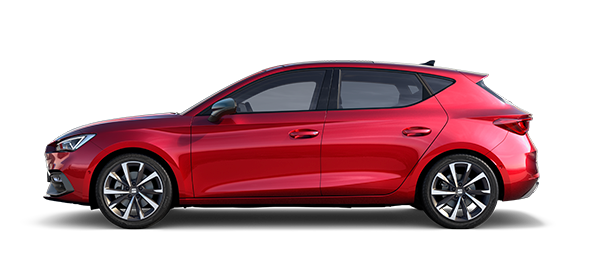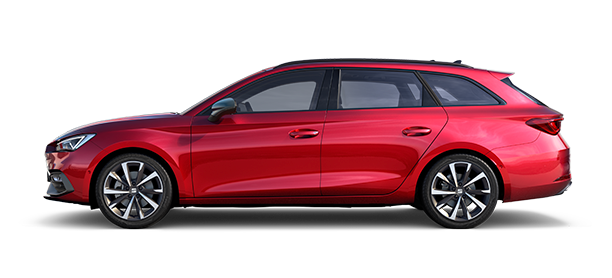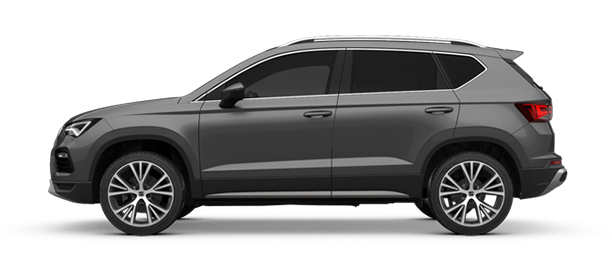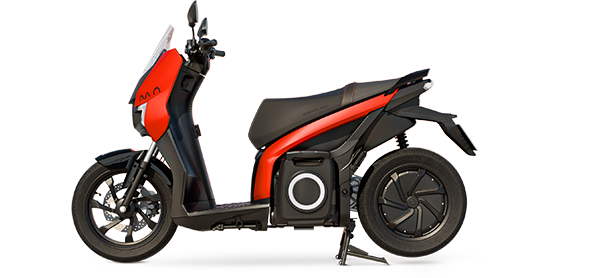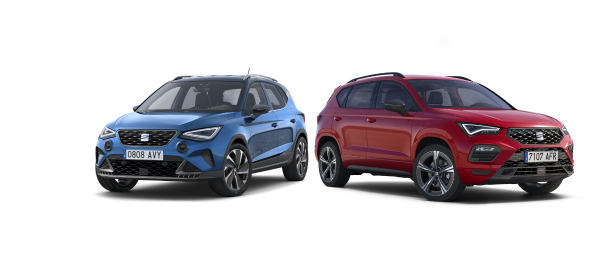“There is no room left. Do you still need to bring another suitcase, a ball and two beach umbrellas? Really?” 50 years ago, SEAT wanted to provide a solution to its customers launching an estate body from its 1430 saloon, the premium and most powerful version of the SEAT 124. In those days, the start of the summer vacation trip might not have been very much different from today. Very few travelled by plane and just a few used to take holidays abroad. It was unusual to have a second car in the family. The SEAT 1430 5-door was designed to meet the new needs of the society in those days. The car was not as bulky as the SEAT 1500 Estate, so it was able to handle the cities better whilst the density of the traffic was increasing and finding a parking space was becoming a challenge. The 1430 had a stance, it served its customers as a business car as well as a car for their day to day activities, bringing the children to school and back. At the weekends or on vacation, the SEAT 1430 revealed itself as a dynamic touring car, ideal for hitting the road, and with a big boot to literally load it up to the roof.
50 years later, the all-new SEAT Leon Sportstourer is born from the production lines at the Martorell facilities. It is a car that is very spacious, dynamic, but even more efficient, safe and advanced than the 1430 Estate was in its time.
Exterior design
“Functional and elegant” said the media about the aesthetics of the SEAT 1430. Chrome highlights the squared proportions of a design with a lot of architectural tone. Next to it, the SEAT Leon Sportstourer looks almost organic, modelled by air, preserving a pure, precise, clean, bold styling. Its compliance with the technical requirements, satisfying aesthetical trends, adding practicality and considering productive conditioning factors make the SEAT Leon one of the most advanced vehicles in its segment.
- Front view: The small radiator grille on the 1430 would not allow to fulfil the fresh air needs of the SEAT Leon in some circumstances. It is not only a matter of engine cooling, but also air intake, engine oil and air conditioning condenser cooling. Managing so much air without spoiling the Leon’s aerodynamics has required the most advanced computing design tools, such as CFD analysis.
- Rear-view: A low cargo area and a broad liftgate are mandatory for an estate body vehicle. That implies a tough structural design, in order to preserve the rigidity and the safety from the original saloon body. Integrated flush bumpers, rather than the prominent 1430 units, are challenging aesthetically and structurally. Rear lamps were notably large in the 1430 saloon, smaller in the 5-door version, but their functionality pales in comparison to the Full LED of the new SEAT Leon.
- Side: Narrow tracks and small tires show a big contrast with the full wheel arches of the Leon Sportstourer. It is not just about increasing the presence of the wheel in the silhouette of the car, but also reaching the limits of the car with them, without overflowing (legal requirement). The ratio of metal sheet and greenhouse surface shows the quest for a good visibility in the SEAT 1430. Do not look for side mirrors in the 1430, because they were not mandatory at that time.
Today, the all-new SEAT Leon Sportstourer is closer to the “magic” proportions 1/3-2/3 which give a visual sense of protection and robustness. Technology helps the driver to control all the environment around the SEAT Leon. In the 70s, TV programmes such as The Jetsons make youngsters dream about the future. Even if SEAT Leon doesn’t fly in 2020, systems such as radar allow the car to “see” in bad weather conditions such as fog. The SEAT 1430 Estate was 3 centimetres higher than the saloon, but just over 1 centimetre longer. Today, the new Leon Sportstourer measures 27 centimetres more than the new SEAT Leon 5-door. And despite its size - 60 centimetres longer than the 1430- the SEAT Leon manoeuvres at levels that 50 years ago were science-fiction, thanks to parking sensors, the rear-view camera, the automatic parking system or the exit assistant.
Interior design and space
- Seating: The SEAT 1430 comfortably cushioned seats with mixed upholstery cannot compete in current driving comfort with the Leon’s multiple adjusting front seats. The backrest is designed to offer good support and shaped for long journeys without discomfort or backpain. The absence of headrests even in the front seats is surprising in the 21st century, as much as an ashtray in the rear seats.
- Boot: The spare wheel took up a large part of the 1430’s boot. Even so, its capacity and performance made it the model chosen by the emergency and surveillance teams such as ambulances or firefighters, in Spain during the ‘70s. Cubical and with usable shapes, the 620 litres of boot capacity of the elongated new SEAT Leon Sportstourer make it the ideal car for large families with large space requirements. Room for cargo that can be increased via the modularity permitted by the folding rear seats.
From analogic to digital
The SEAT 1430 was quite a serious car. Children knew it by poking their faces out of the window on the driver’s side when parked. The 1430 had a time clock, but even more important, a rev counter and a speedometer showing 170 km/h like a sportscar. More fascination arises from the SEAT Leon, because it does not have dials at all, but a 10,25” Digital Cockpit which offers info that the user can configure according to his taste.
With not so many different models on the market in 1970, the SEAT 1430 was distinctive, with its double squared headlights. “Magnificent lighting” was an adjective received at that time. The same qualification that you will find with the new SEAT Leon Sportstourer. The Full LED technology also gives the new Leon a clearly recognizable style.
- An elegant keyed lid concealed and protected the 1430’s tank cap. The larger fuel tank (47 litres instead of 39) for the Estate version required to change the access to the tank to the left side of the car - an unthinkable design disruption nowadays. The new SEAT Leon Sportstourer features Kessy Go keyless and will be appreciated for its USB-C sockets to connect and recharge portable devices, and for its wraparound ambient light.
From Otto to Miller... and to alternative energies
A classic powertrain scheme was used for the SEAT 1430. That meant a longitudinal mounted engine and rear wheel drive. Instead, SEAT Leon follows a present-day classic: front transversal engine and front wheel drive. Of course, you could also have SEAT 4Drive –the all-wheel drive transmission- coupled with the 2.0 TDI engine.
The SEAT 1430 took its name from the displacement of its 1.438 cm3 four-cylinder engine offering up to 70PS (and later on, with a more powerful version of 75PS - the one used in the press materials). In the ’70s, none had ever heard anything like a Miller cycle. This Miller mode is used by new SEAT Leon to offer 130PS based on quite a similar displacement, 1.498 cm3. Long stroke, direct injection, a variable turbo, a compression ratio rocketed to 12,5:1 and Active Cylinder Management make the magic. From all the above, the 1.5 TSI engine derives an extraordinary efficiency with a great variety of output power options, 130PS and 150PS, the latter with a mild-hybrid engine configuration. SEAT Leon Sportstourer will offer fuel consumption values around 6 l/100 km in its mild-hybrid configuration (eTSI). That consumption figure is half that of a SEAT 1430. The SEAT Leon Sportstourer offers different engine technologies: gasoline, diesel, compressed natural gas, mild-hybrid and plug-in hybrid.





